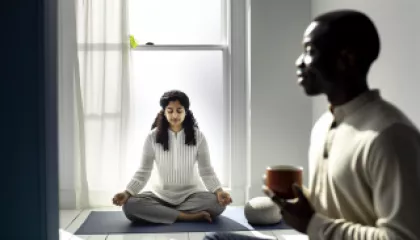A Beginner's Guide to Starting Drama Therapy
1 year ago
Drama Therapy
Mindfulness vs. Meditation: A Step-by-Step Guide to Understanding the Differences
1 year ago
Mindfulness vs Meditation
Exploring the Science of Personal Growth: Key Research Findings
1 year ago
Personal Growth
Transforming My Connections: A Personal Journey in Social Skills Training
1 year ago
Social Skills Training
5 Steps to Begin Mindfulness Meditation for Beginners
1 year ago
Mindfulness Meditation
Top 10 Diverse Relationship Types Redefining Love
1 year ago
Relationship Diversity






